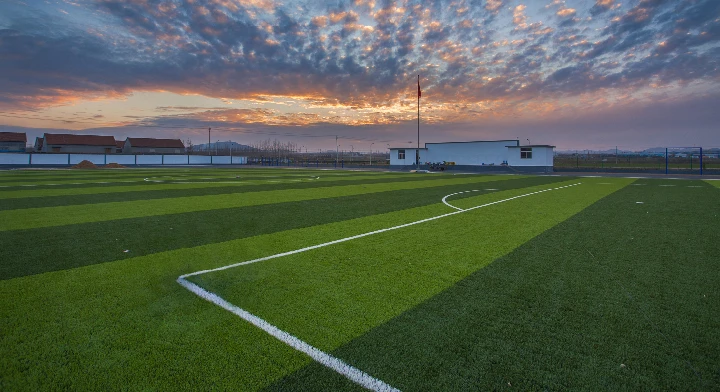
- Afrikaans
- Arabic
- Belarusian
- Bengali
- Czech
- Danish
- Dutch
- English
- Esperanto
- Estonian
- Finnish
- French
- German
- Greek
- Hindi
- Hungarian
- Icelandic
- Indonesian
- irish
- Italian
- Japanese
- kazakh
- Rwandese
- Korean
- Kyrgyz
- Lao
- Latin
- Latvian
- Malay
- Mongolian
- Myanmar
- Norwegian
- Persian
- Polish
- Portuguese
- Romanian
- Russian
- Serbian
- Spanish
- Swedish
- Tagalog
- Tajik
- Thai
- Turkish
- Turkmen
- Ukrainian
- Urdu
- Uighur
- Uzbek
- Vietnamese
Choosing the Best Synthetic Turf for Soccer Field Applications
Sep . 28, 2024 21:47 Back to list
The Rise of Synthetic Grass for Soccer Fields
In recent years, synthetic grass has gained significant popularity as a preferred playing surface for soccer fields worldwide. This trend is driven by the myriad benefits synthetic turf offers over natural grass, particularly in terms of maintenance, durability, and all-weather usability.
Advantages of Synthetic Grass
One of the primary advantages of synthetic grass is its minimal maintenance requirements. Natural grass fields necessitate regular mowing, watering, fertilizing, and pest control. In contrast, synthetic turf requires far less upkeep, making it an economically viable option for many sports organizations and municipalities. This reduced maintenance not only saves time and labor costs but also allows facilities to allocate their resources toward other areas, such as enhancing player experience and upgrading amenities.
Durability is another key benefit of synthetic grass. Natural fields can suffer from wear and tear, particularly in high-traffic areas, leading to mud patches and uneven playing surfaces. This can result in injuries and decreased playability. Synthetic grass, on the other hand, is designed to withstand heavy usage and varying weather conditions. It ensures a consistent playing surface throughout the year, providing players with a reliable experience regardless of external factors.
Moreover, synthetic turf offers improved safety features. Advanced technologies have developed infill systems and shock-absorbing layers, designed to reduce the risk of injuries associated with falls and impacts. This is particularly important in sports like soccer, where sudden movements and collisions are commonplace. Studies have shown that fields made from synthetic materials can significantly decrease the rate of injuries, providing peace of mind to coaches, parents, and players alike.
Weather Resilience
synthetic grass for soccer fields

Weather conditions heavily influence the playability of natural grass fields. Heavy rain can lead to waterlogged pitches that are unsafe for play, while extreme heat can scorch the grass, rendering it unusable. Synthetic grass, however, drains better, allowing for immediate play even after heavy rainfall. This capability attracts schools, clubs, and professional leagues to synthetic surfaces, as they can schedule more games and training sessions without the fear of cancellations due to weather-related issues.
Environmental Considerations
In recent discussions, environmental concerns regarding synthetic grass have arisen. Traditional beliefs held that natural grass is the more sustainable option; however, innovations in synthetic turf design are changing this narrative. Manufacturers now produce eco-friendly synthetic grasses using recyclable materials and environmentally conscious manufacturing processes. Additionally, advancements in infill systems utilize materials that are less harmful to the environment, allowing synthetic fields to coexist with sustainability initiatives.
The Future of Soccer Fields
As the demand for soccer continues to grow globally, the need for accessible, high-quality playing surfaces becomes increasingly paramount. Synthetic grass meets this demand effectively, allowing facilities to cater to a more extensive range of soccer activities, from youth leagues to professional training camps.
Furthermore, the ongoing advancements in turf technology promise to enhance the synthetic grass experience continually. Innovations such as improved grass blade designs, advanced infill materials, and better drainage systems are being developed. These improvements aim to mimic the feel and performance of natural grass even more closely, ensuring that players benefit from the best of both worlds.
In conclusion, the rise of synthetic grass for soccer fields is not merely a trend but a reflection of changing needs and advancements in sports infrastructure. Its benefits – reduced maintenance, durability, safety, weather resilience, and continuous improvements – make it an appealing choice for various organizations. As we look toward the future, it is clear that synthetic turf will play an integral role in shaping the landscapes of soccer fields around the globe, ensuring that players can enjoy the game they love in optimal conditions all year round.
-
The Benefits of Artificial Turf for Indoors
NewsJul.15,2025
-
How Artificial Grass Suppliers Ensure Quality Products
NewsJul.15,2025
-
Artificial Grass and Pets: A Space for Relaxation
NewsJul.08,2025
-
Balcony & Outdoor Decoration with Artificial Grass
NewsJul.08,2025
-
Best Indoor Artificial Grass for Home
NewsJul.07,2025
-
Best Pet Turf for Dogs: Safe & Durable Artificial Grass Options
NewsJul.07,2025
Products categories









